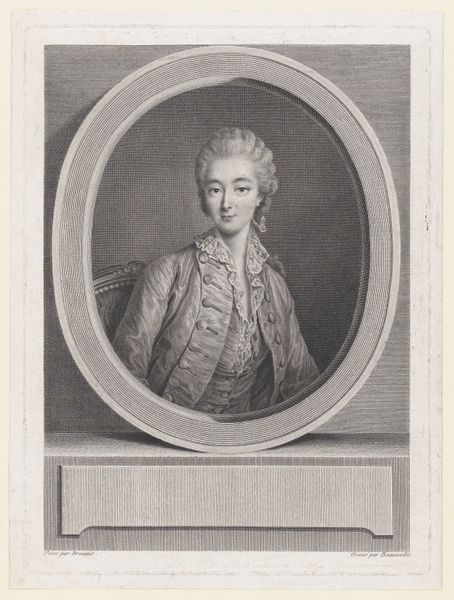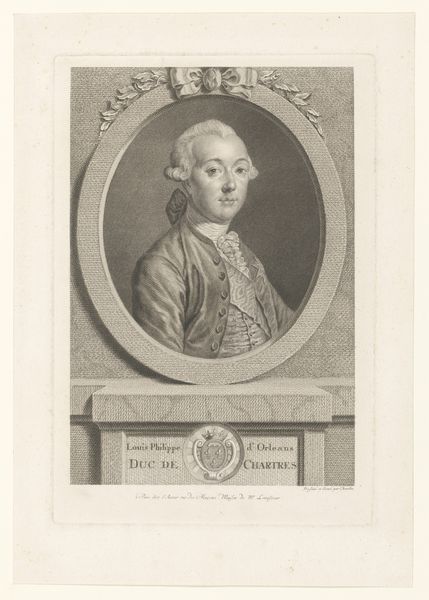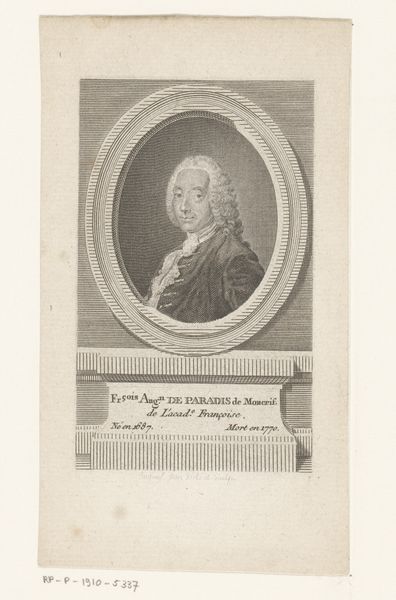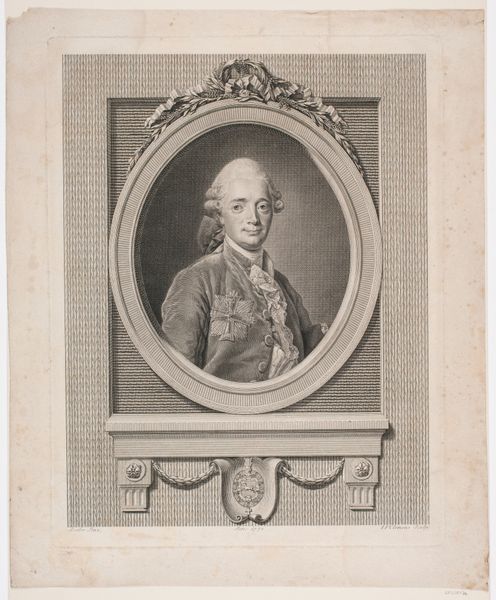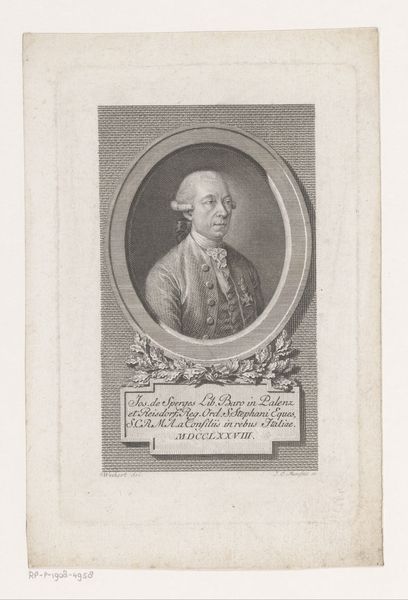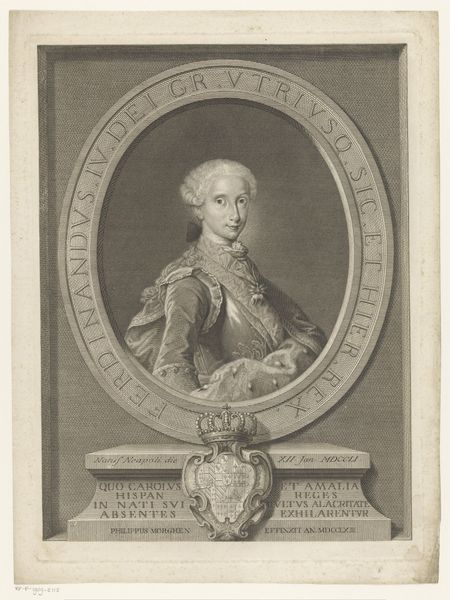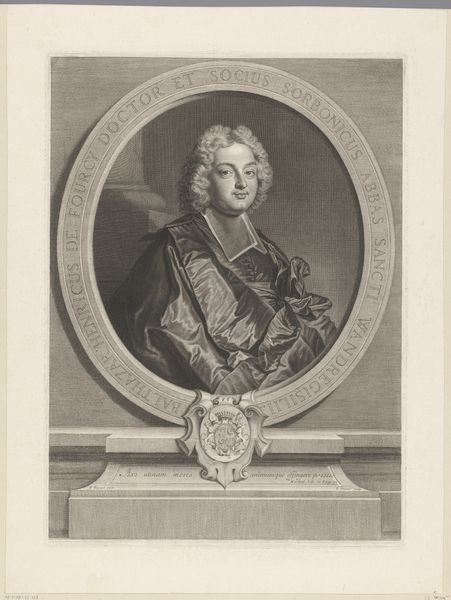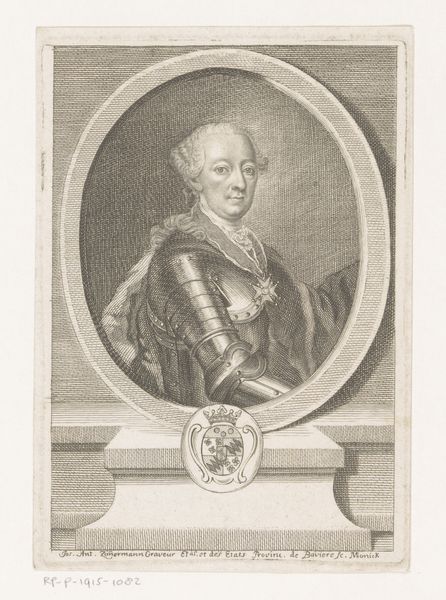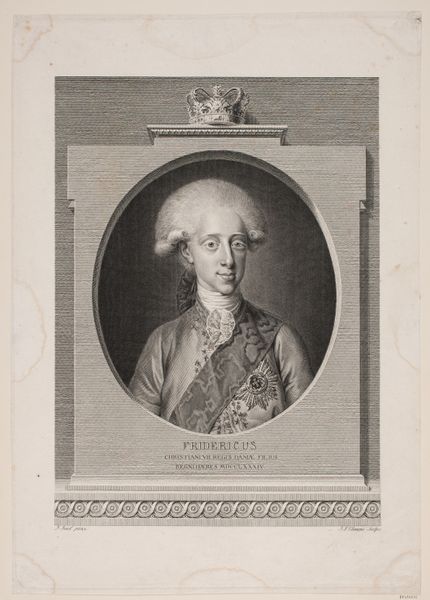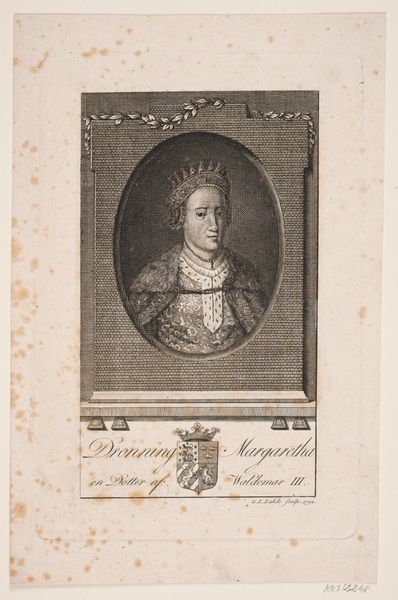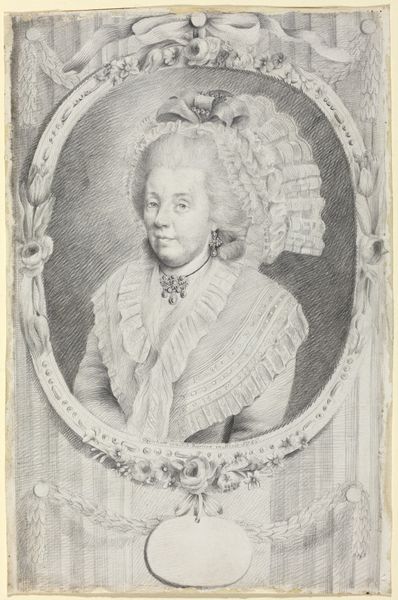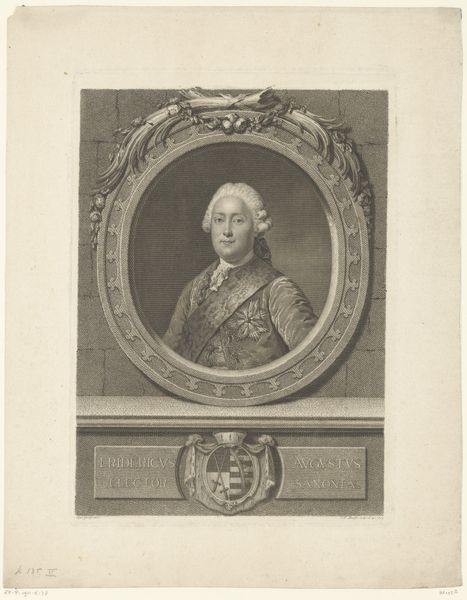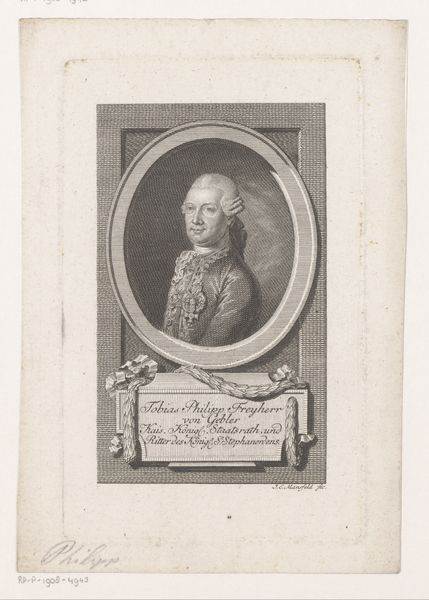
print, engraving
#
portrait
#
neoclacissism
# print
#
old engraving style
#
historical photography
#
history-painting
#
engraving
Dimensions: height 287 mm, width 234 mm
Copyright: Rijks Museum: Open Domain
Editor: This is "Portrait of Alexander Kurakin," a print made in 1779 by Antoine Radigues. It's a delicate engraving, and what strikes me first is the circular frame and the elaborate texture surrounding it. It’s so controlled. What do you see in this piece, considering the… obvious constraints of the medium? Curator: Precisely. The print medium dictates a commitment to line and tonal values, doesn’t it? Notice how Radigues leverages the circular form—a pure geometric shape—to contain the figure, which offers a strong contrast with the textured background and introduces the eye to the detailed portrait itself. It’s an interesting interplay of figure and ground, with the decorative elements seemingly almost as important as the sitter. Editor: So the composition emphasizes the form and texture to almost rival the importance of the subject himself? Curator: Indeed. Look at the meticulous cross-hatching and stippling employed to create depth and volume. Radigues uses line variation—thick to thin, short to long—to model Kurakin's face and costume, giving dimension and texture to fabric. Note, too, how the frame, ostensibly secondary, incorporates an elaborate ribbon that mirrors the sitter's ornate sash. A certain level of structural cohesion underlies the aesthetics here. Editor: I see what you mean. The way the lines create those textures is captivating. The controlled lines create volume and really draw you in to observe the detail. Curator: Ultimately, it's the balance of formal elements—shape, line, texture—and the conscious application of these that convey not just a likeness but also an idea of aristocratic power through structured aesthetics. What have you observed through our chat? Editor: I’ve learned that sometimes it's not only about the subject in a portrait but the deliberate composition and technique that create layers of meaning beyond mere representation. It really changed my perspective!
Comments
No comments
Be the first to comment and join the conversation on the ultimate creative platform.
